Vietnam is a paradise for travelers seeking raw nature, hidden trails, and authentic cultural encounters — and nothing captures that spirit better than Off the Beaten Path Vietnam trekking. Whether you’re chasing quiet landscapes, challenging hikes, or meaningful local experiences, Vietnam’s lesser-known trekking destinations promise a journey that feels both adventurous and deeply genuine.
Why go off the beaten path in Vietnam?
Most travelers know Sapa, Ninh Binh, or Ha Giang. These are stunning, no doubt, but they’ve become busy. Off the beaten path trekking in Vietnam lets you slow down and experience something different — places where only the sounds of birds, streams, and laughter from village kids fill the air.
When you trek away from tourist routes, you discover:
- Authentic culture: You stay with local Thai, Muong, or Hmong families, learn how they live, and share meals made from fresh garden produce.
- Unspoiled nature: Dense forests, crystal-clear waterfalls, and valleys untouched by development.
- Peace and space: Fewer crowds, more time to connect with yourself and your surroundings.
This kind of journey brings you back to the simple things — walking, breathing, and being fully present in nature.
Top off the beaten path trekking destinations in Vietnam
Vietnam has an incredible variety of landscapes, from misty mountains to deep jungles and peaceful valleys. While popular trekking spots like Sapa or Ha Giang attract thousands of visitors, there are still countless hidden places waiting to be explored. If you truly want to go off the beaten path, here are some of Vietnam’s most rewarding and authentic trekking destinations — where time slows down, and every step feels like a discovery.
Pu Luong Nature Reserve
Nestled between Mai Chau and Cuc Phuong National Park, Pu Luong Nature Reserve in Thanh Hoa Province is one of Vietnam’s best-kept secrets. It’s a paradise of terraced rice fields, limestone mountains, and quiet Thai and Muong villages that still keep their old traditions.
Trekking experience:
Trails in Pu Luong range from easy valley walks to multi-day adventures through remote hamlets. You’ll hike along narrow dirt paths shaded by bamboo, cross streams with wooden bridges, and walk past farmers working in the rice paddies.
Highlights you shouldn’t miss:
- Kho Muong Valley and Bat Cave: A stunning valley accessible only by foot, surrounded by limestone cliffs. The Bat Cave here is an ancient formation with thousands of tiny bats.
- Ban Hieu Waterfall: A peaceful, hidden cascade perfect for swimming after a trek.
- Don Village: The heart of Pu Luong, home to charming stilt-house homestays and eco-lodges with panoramic terrace views.
- Bamboo Water Wheels: Ingenious traditional structures that lift water from streams to irrigate rice fields — a symbol of Thai culture in Pu Luong.
Why it’s special:
Pu Luong offers both comfort and adventure. It’s accessible from Hanoi (about 4–5 hours), yet remains quiet and natural. You can trek, swim, cycle, and experience real Thai hospitality — all in one place.
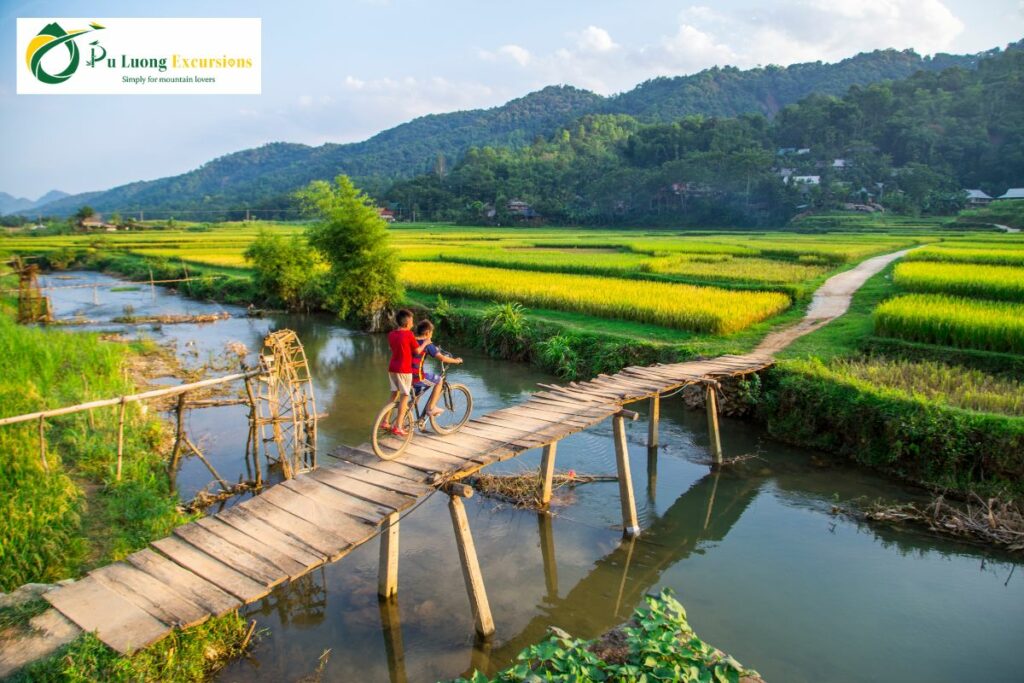
Pu Luong Nature Reserve
Ba Be National Park
Located in Bac Kan Province, Ba Be National Park is one of the most pristine trekking areas in Northern Vietnam. The park’s centerpiece, Ba Be Lake, is surrounded by towering limestone cliffs, evergreen forests, and remote Tay ethnic villages.
Trekking experience:
Most treks here start from Pac Ngoi Village, taking you deep into the jungle. You’ll walk along forest trails, pass waterfalls like Dau Dang, and visit hidden caves such as Puong Cave or Hua Ma Cave.
What makes Ba Be special:
- Trekking routes combine perfectly with boat trips or kayaking on Ba Be Lake.
- You can visit Dao ethnic villages or spend the night in a Tay family’s stilt house by the lake.
- Rich biodiversity — monkeys, butterflies, and rare plants everywhere.
Ba Be feels like a world apart — quiet, lush, and full of life.

Ba Be National Park
Cao Bang – Ban Gioc Waterfall
In the far northeast, Cao Bang Province is one of Vietnam’s most scenic and untouched trekking areas. It’s famous for the majestic Ban Gioc Waterfall, but the real magic lies beyond the main road — in its valleys, caves, and ethnic villages.
Trekking experience:
Trek from Ban Gioc through Phuc Sen (known for traditional blacksmithing) to Ngoc Con or Pac Bo, the historic hideout of Ho Chi Minh. You’ll pass rice terraces, bamboo forests, and rural life that hasn’t changed in generations.
Highlights:
- Ban Gioc Waterfall: One of the largest in Asia, on the border with China.
- Nguom Ngao Cave: A magnificent limestone cave full of stalactites.
- Ethnic diversity: Home to Tay, Nung, and Dao communities who still wear colorful traditional clothing.
Why go here:
Cao Bang combines natural drama with deep cultural roots. It’s less visited and offers some of the most rewarding long-distance treks in northern Vietnam.
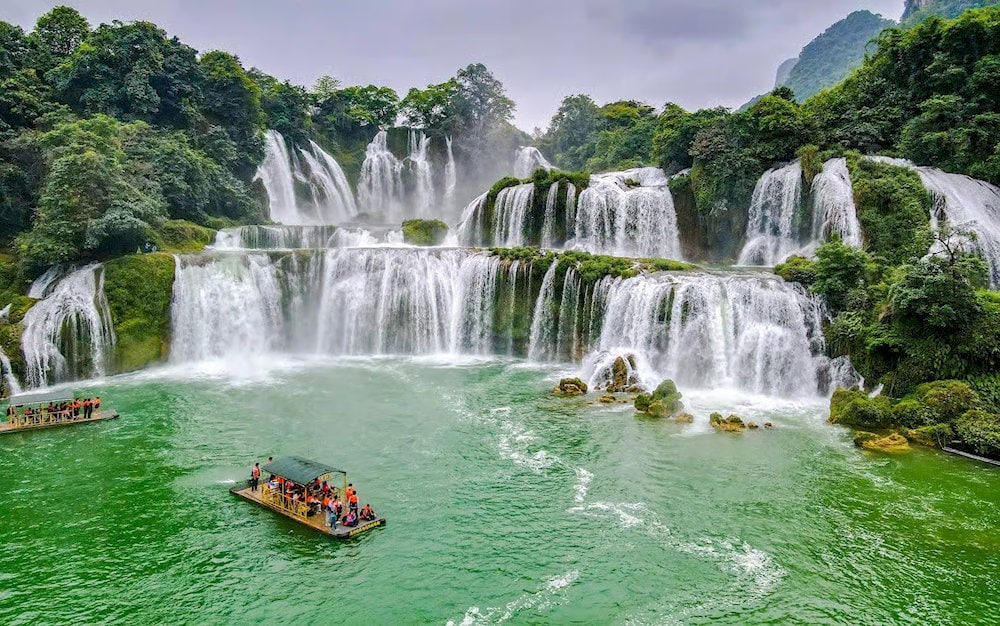
Cao Bang – Ban Gioc Waterfall
Ha Giang’s Hidden Corners
Ha Giang is known for its epic motorbike loop, but its side trails offer incredible trekking far from the crowds. Villages like Du Gia, Nam Dam, and Lung Cu open a window into authentic Hmong, Dao, and Lo Lo cultures.
Trekking experience:
You’ll walk along narrow mountain paths that curve around dramatic karst cliffs, cross tiny suspension bridges, and stay in homestays surrounded by terraced fields.
Unmissable spots:
- Du Gia Valley: Peaceful with waterfalls and family-run homestays.
- Nam Dam Village (Quan Ba): Famous for its herbal baths and Dao culture.
- Dong Van Plateau: A UNESCO Global Geopark full of geological wonders and stone villages.
Ha Giang trekking is more rugged, ideal for travelers seeking challenge and wild beauty.
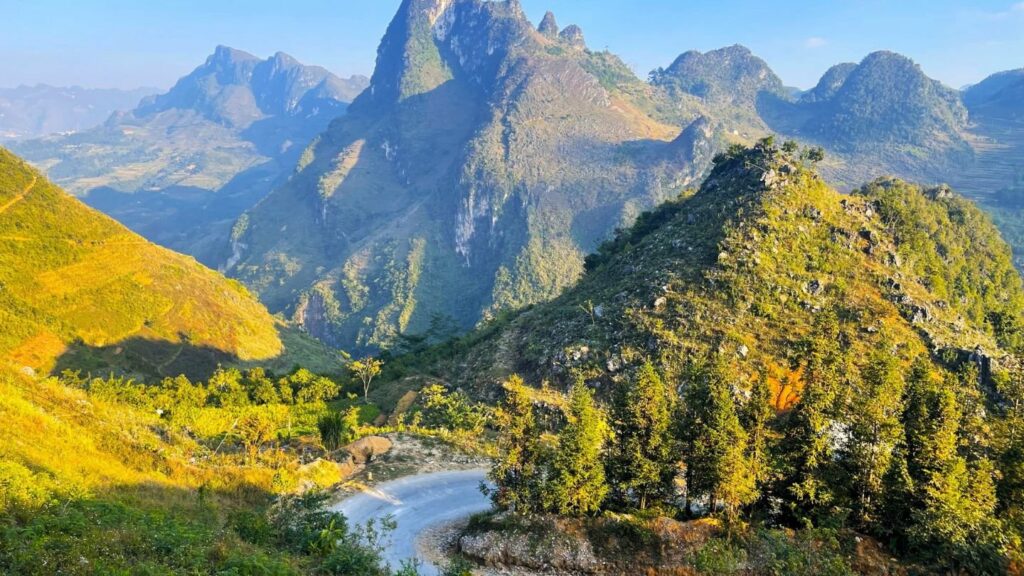
Ha Giang’s Hidden Corners
Mu Cang Chai – Golden terraces of Yen Bai
Mu Cang Chai is a small district in Yen Bai Province that shines during rice season. Every slope is sculpted into layered rice terraces — some of the most beautiful in Asia.
Trekking experience:
The treks here lead through remote Hmong villages like La Pan Tan, Che Cu Nha, and De Xu Phinh. You can walk along curving terraces, meet farmers at work, and witness sunset over mountains glowing in gold.
Best time to visit:
- Late May–early June: Planting season — mirror-like paddies filled with water.
- September–October: Harvest season — terraces turn golden.
Why it’s worth it:
Mu Cang Chai offers postcard-perfect scenery and fewer crowds than Sapa, yet it’s just as stunning.
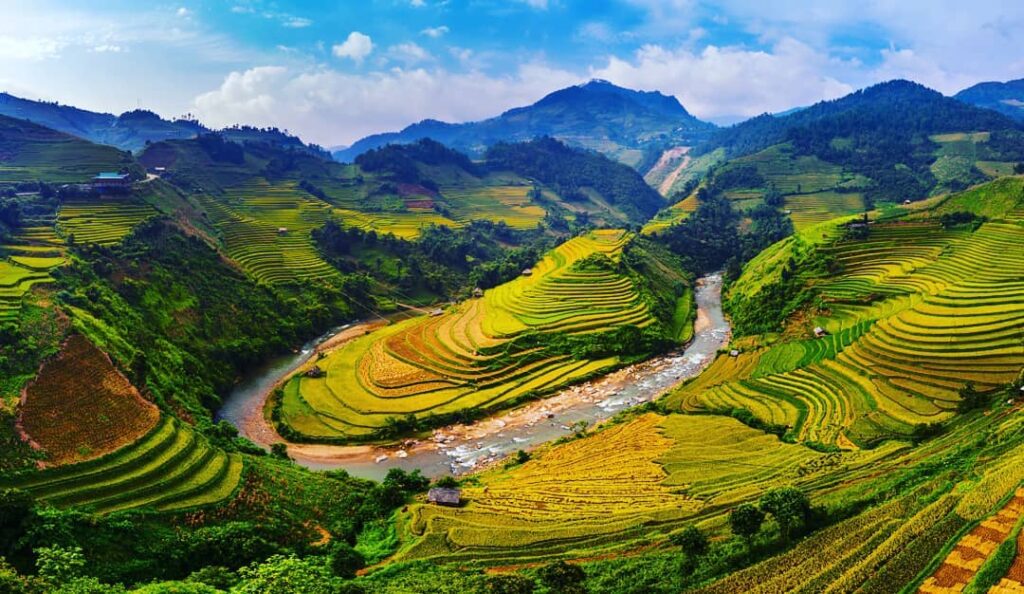
Mu Cang Chai – Golden terraces of Yen Bai
Tay Con Linh Range – Vietnam’s mysterious roof
For true adventure lovers, Tay Con Linh in Ha Giang is one of Vietnam’s most challenging and remote treks. It’s known as the “Roof of Northeast Vietnam,” reaching over 2,400 meters.
Trekking experience:
Expect steep climbs, dense jungle, and unpredictable weather — but also incredible views and total solitude. You’ll likely camp in the forest or stay with Hmong families in small mountain villages.
This trek requires a local guide, as trails are wild and sometimes unclear. It’s a test of endurance and a reward for those seeking pure wilderness.

Tay Con Linh Range – Vietnam’s mysterious roof
Mai Chau and its back valleys
Only 3 hours from Hanoi, Mai Chau is a peaceful valley of Thai villages surrounded by rice paddies. While it’s more developed, trekking deeper into Ban Buoc, Van Mai, or Hang Kia–Pa Co brings you far from tourist paths.
Why go:
Mai Chau’s gentle hills and authentic Thai culture make it a great warm-up before exploring Pu Luong. You can walk or cycle through villages, enjoy homestays, and join in traditional Xoe dance at night.
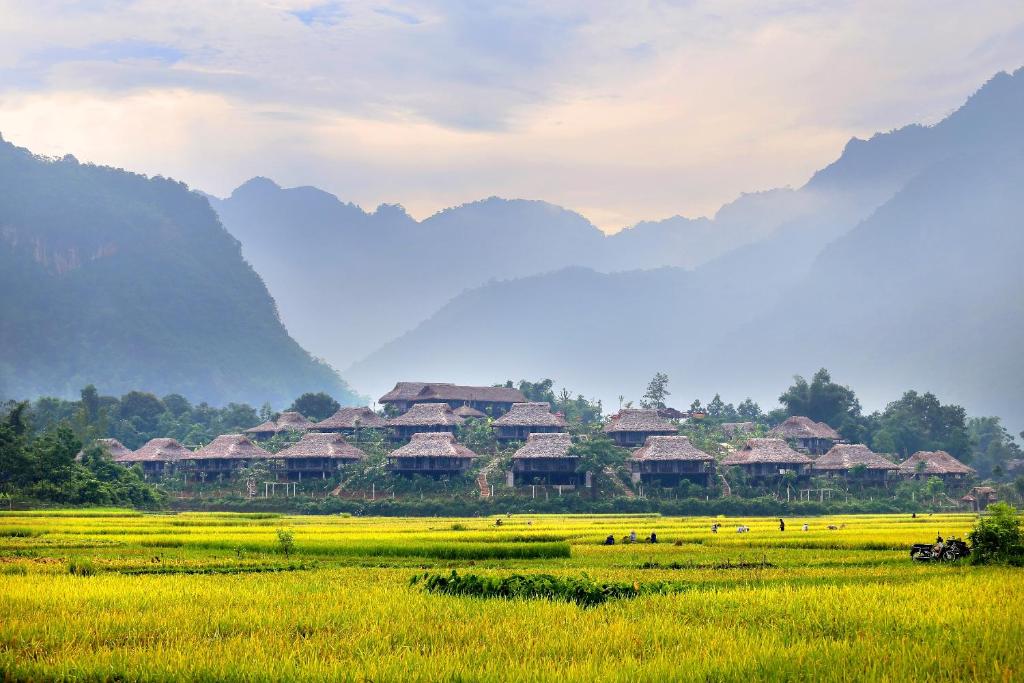
Mai Chau and its back valleys
Kon Tum and Mang Den
For something completely different, head south to Vietnam’s Central Highlands. In Kon Tum Province, you’ll find red-earth trails, pine forests, and villages of Ba Na and Jarai ethnic groups.
Highlights:
- Trek through Mang Den pine forest and Chu Mom Ray National Park.
- Visit local churches and learn about tribal culture.
- Cooler weather year-round — perfect for walking.
It’s a peaceful, spiritual trekking destination with a unique cultural flavor.
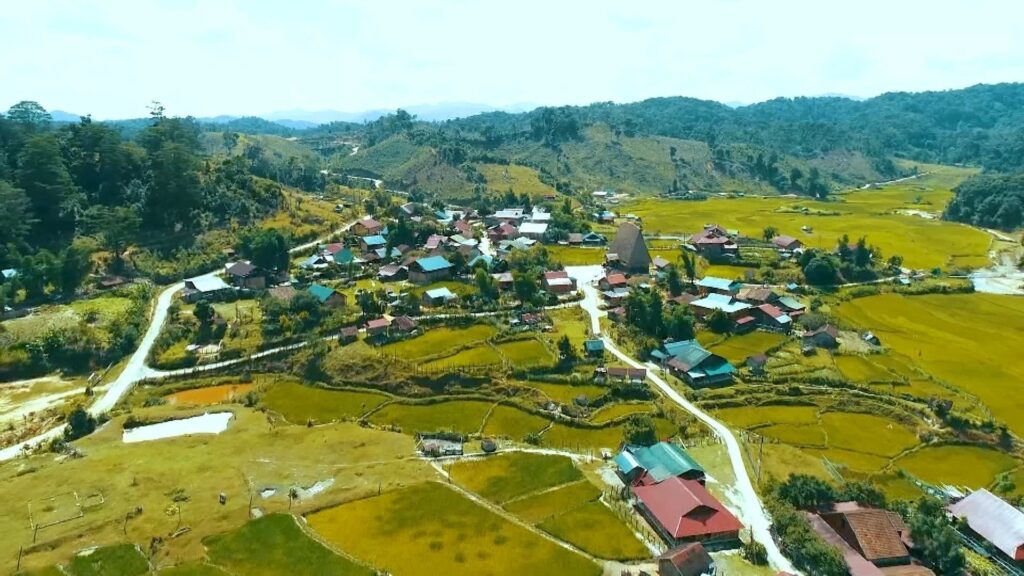
Kon Tum and Mang Den
What to expect on your trek
Off the beaten path trekking in Vietnam is about slow travel. You don’t rush from one viewpoint to another — instead, you spend time learning and living with locals.
Expect to:
- Stay in homestays — simple, clean, and full of warmth.
- Eat local dishes — sticky rice, bamboo shoots, forest vegetables, grilled fish, and home-brewed rice wine.
- Trek from 2 to 6 hours a day, depending on your route and fitness level.
- Enjoy unplugged moments — phone signal is weak, but connection with nature is strong.
You might also take part in cultural activities like Xoe dance, Khap singing, or bamboo weaving.
Off the beaten path Vietnam trekking is not just about walking — it’s about feeling. Feeling the cool air over rice terraces, the kindness of a villager’s smile, the rhythm of bamboo water wheels turning beside a stream.
About Pu Luong Excursion
In the heart of Vietnam’s off-the-beaten-path trekking routes, Pu Luong remains a true gem — and Pu Luong Excursions is the most trusted partner to explore it with. As a fully licensed tour operator, they offer authentic nature experiences, trekking adventures, eco-retreats, hotels, and homestays across Pu Luong, Thanh Hoa. With a strong focus on ethnic culture, long-distance hiking, and jungle routes, Pu Luong Excursions delivers Northern Vietnam’s finest countryside tours for travelers seeking real, untouched beauty.
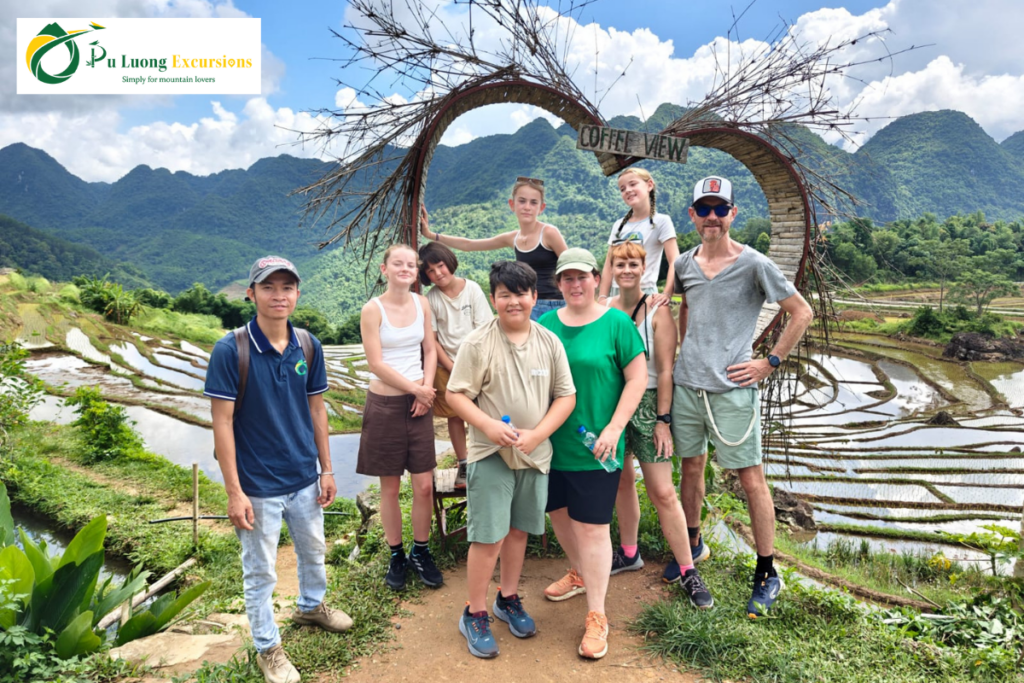
About Pu Luong Excursion
If you’re ready to see the real Vietnam, far from the crowds and full of life, then lace up your boots — adventure is waiting.
Join Pu Luong Excursions and discover the trails that few ever walk but none ever forget.

